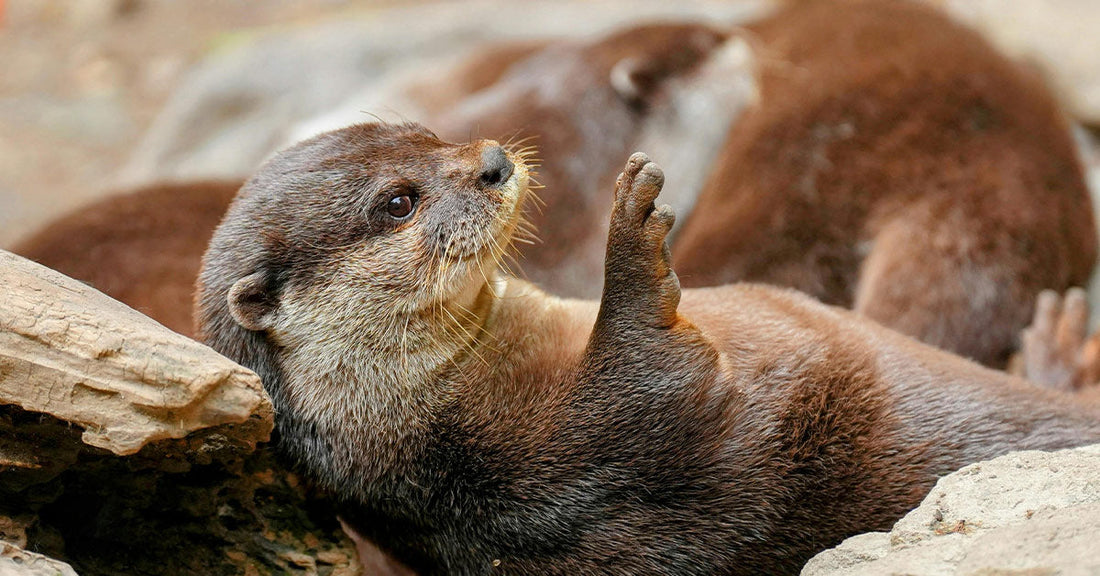Otters Are Being Ripped From the Wild to Fuel Japan’s Café Craze
Matthew Russell
In the soft-lit cafés of Tokyo and Osaka, tourists sip coffee while otters squeal and squirm under the hands of strangers. The appeal is clear—these animals are irresistibly cute, and their antics play perfectly for the camera. But behind the filtered images and novelty lattes lies a network of poaching, confinement, and suffering that spans across Southeast Asia.
At the heart of this trade is the Asian small-clawed otter, a species native to regions like Thailand, Indonesia, and Vietnam. Despite its protected status under international law, the otter has become a fixture in Japan’s booming exotic pet café industry. As Earth.com reports, their popularity online and in cafés has created a relentless demand that traffickers are all too eager to meet.

Otters in cafés are often illegally trafficked from wild habitats.
Poached in the Wild, Displayed in a Café
<>p>Otter cubs don’t come from breeders. They’re taken from the wild. Their families are often killed—shot, electrocuted, or smoked out of dens—so that poachers can snatch the babies. Some never survive the journey. Others arrive with missing teeth, a cruel alteration meant to make them safer to handle in cafés and private homes. Many suffer from infections, decay, and trauma, according to World Animal Protection.
Though Japan has banned the commercial import of otters since 1988, they continue to appear in animal cafés and pet shops. Genetic testing conducted by Japanese and Thai researchers revealed that the majority of otters in cafés match the DNA of wild populations in southern Thailand—areas recognized as poaching hotspots. The findings, detailed in a study published in Conservation Science and Practice, paint a clear picture: these otters were not bred in captivity. They were stolen from the wild.

Many are taken from Thailand, a poaching hotspot.
Captivity Is Not Cute
Animal cafés market their residents as happy and healthy. The reality, as documented by multiple welfare groups, is starkly different. Otters are kept in tiny cages, some without water. They cry out when handled and show signs of psychological distress—biting their claws, pacing, or collapsing into long periods of stillness. At times, they are kept alone, deprived of the social structures they rely on in nature, where they live in extended family groups of up to 20.
Owl cafés pose similar ethical questions. Like otters, owls require specific environmental conditions and social dynamics. They are nocturnal predators forced into brightly lit rooms for human amusement. ABC notes that these cafés are not merely quirky tourist stops—they are part of a system that commodifies sentient wildlife for profit.

Otter cubs are snatched after their families are killed.
Genetic Collapse in the Name of Novelty
Otters in zoos and aquariums in Japan tend to have more genetic diversity than those found in cafés. That’s because zoos typically follow structured breeding programs and maintain lineage records. In contrast, many otters in cafés are either inbred or closely related, having descended from a small, unregulated breeding pool.
This lack of genetic variety creates health problems and limits the species’ adaptability, which is already under pressure due to habitat loss and human encroachment. As The Cool Down reports, the ecological role of otters in their native environments—controlling prey populations and maintaining water quality—makes their disappearance a threat not only to biodiversity, but to entire ecosystems.
Extinction Is Not a Hypothetical
Japan's fascination with otters may be fueled in part by nostalgia. The Japanese river otter, once a native species, was declared extinct in 2012 after decades of environmental degradation and hunting. Its absence hangs over the current craze. Conservationists fear that without action, the Asian small-clawed otter could follow the same path.
As Earth.com reports, some scientists now hope that better genetic tracking and international cooperation can help protect these animals from being loved to death. But that requires more than research. It demands political will and public awareness.

Most otter imports into Japan have no legal records.
Instagram Likes Aren’t Harmless
The internet’s obsession with otters is not innocent. Social media has given exotic pet ownership a platform—and in doing so, it has normalized cruelty.
One YouTube channel featuring two otters has more than 1.8 million followers and a product line. Its owner runs multiple otter cafés. Cute videos become marketing tools, fueling demand for animals that were never meant to live in captivity.
According to ABC, even well-intentioned patrons contribute to the problem by treating these animals like props. Every share and like adds to the cycle of exploitation. And every otter in a cage is a reminder that demand is still strong—and still profitable.
Ethical Alternatives Exist
There are ways to engage with animals that don’t involve suffering. Cat and dog cafés that partner with shelters and support adoption offer a model where animals can benefit from the attention. But for wild species like otters and owls, captivity will never be enough. Their needs—space, water, family, freedom—cannot be replicated in a café.
As conservation biologist Worata Klinsawat told The Cool Down, “It’s natural to feel affectionate toward otters, but we need to leave them in the wild so they can fulfill their ecological role, for them and for us.”
Click below to make a difference for otters.

